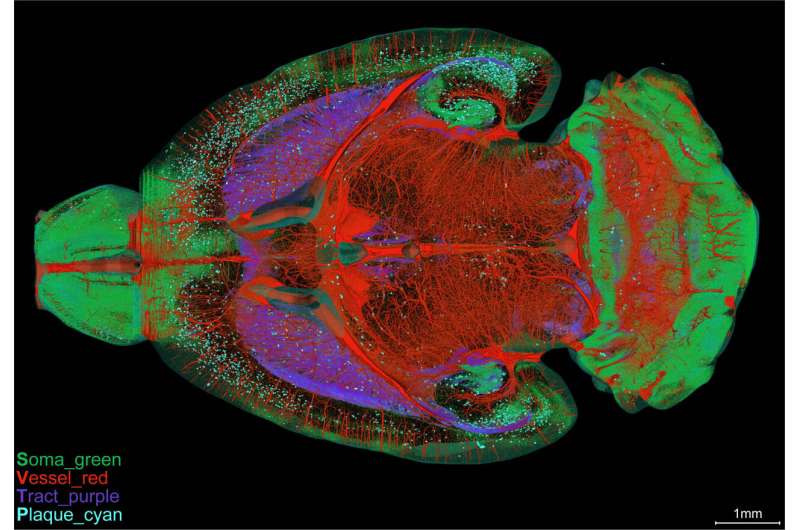
To understand the complex pathology of Alzheimer’s disease, it is necessary to simultaneously visualize Aβ plaque with its surrounding brain structures at the subcellular level in the intact brain. However, this is rarely achieved due to technical limitations. Due to spectral overlap of the fluorophore and crossover of fluorescence emission, it is still challenging to detect more than three fluorescent labels using fluorescence imaging techniques.
In a study recently published in Frontiers in Neuroscience, a team of researchers from the Center of Micro-Optical Sectioning Tomography (MOST) and Image Fusion Analysis, Shanghai Institute of Materia Medica of the Chinese Academy of Sciences, visualized the Aβ plaques, nerve tracts and nerve processes, somata, and blood vessels simultaneously in the whole brain of mice with Alzheimer’s Disease (AD) for the first time, without any specific labeling.
Employing the MOST system, whole-brain Nissl staining, and a customized image processing workflow, the researchers distinguished the characteristic signals of these multiple structures based on the differences in gray values and morphologies. Taking advantage of this workflow, they were able to analyze how the Aβ plaques interact with capillaries, somata, and processes at a submicron resolution of 3D whole-brain scale.
Source: Read Full Article
